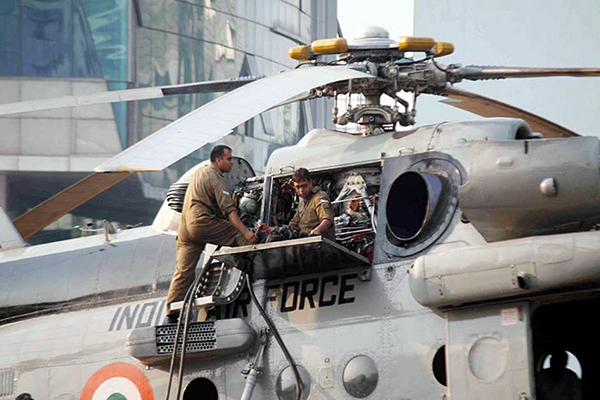Redefining its requirements for outsourcing the repair and overhaul of its Russian-origin Mi-17 class helicopters to the private industry, the Indian Air Force will now off-load only a part of the overhaul process to external agencies.
In March, the IAF had invited the industry to participate in the Mi-17 overhaul programme to overcome the shortfall in the IAF’s existing in-house capacity, speed up the overhaul process and boost the country’s aviation capability.
The industry will now be associated with the overhaul process under the ‘plant-in-plant’ concept where six newly defined tasks will be executed by the successful bidder at the IAF’s No.3 Base Repair Depot under supervision of the depot’s staff. Provision of manpower, tools and specified spares will be the responsibility of the industry while initial technical training to the private crew on the Mi-17 will be provided by the IAF.
The IAF envisions 15 helicopters to be overhauled under this arrangement during 2022-23 and this arrangement will be in place for at least two years. It takes about three months to overhaul one helicopter.
Earlier, the entire overhaul process, right from accepting the helicopter to post-overhaul ground and flight tests, including overhaul of aero-engines, replacement of all spares, hoses, seals and consumables, as well as certification, was to be undertaken by the industry before handing the aircraft back to the IAF. It was to be undertaken over 10 years with the possibility of further extension.
In a fresh expression of interest, issued mid-May, the IAF has listed out six processes that can be taken up by the private industry. These include dismantling of the helicopter and its aggregates, paint removal and cleaning of complete helicopter and its parts, defect analysis of the structure, including visual checks, non-destructive test for cracks, dents, loose or missing rivets, corrosion and carrying out necessary repairs, removal of the electrical loom and its refurbishment followed by testing and relaying, cockpit and cargo compartment ceiling, side and floor panel repairs and refurbishment, and finally re-painting and marking of the helicopter.
The IAF operates three variants of the Mi-17 class, including the latest Mi-17 V5, Mi-17 1V and older versions, which form the backbone of its medium-lift rotary component. These are overhauled at No.3 Base Repair Deport in Chandigarh, which is the largest helicopter maintenance establishment for Soviet or Russian origin helicopters.
The IAF reportedly operates over 220 Mi-17 helicopters that began entering service in 1991. These gradually replaced the earlier Mi-8 and are extensively used for tactical missions such as troops transport, assault, ferrying and air dropping supplies in remote areas, special operations, search and rescue and disaster management.













